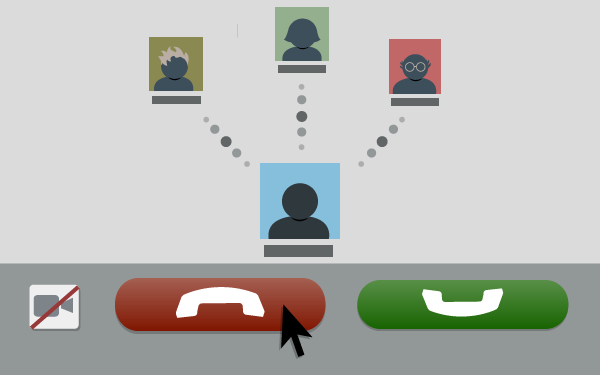
Way back before internet video conferencing I engaged a colleague in Europe to get involved in a joint project. All of the details were meticulously discussed for months over email and in countless long distance telephone calls. When every imaginable trans-Atlantic duck was in a perfectly straight row, I emailed him the contract which reflected the agreement and he replied that he will be happy to sign it… in person. So could I just jump on a plane for a mere 25 hours each way (including layover) and fly a 12,200 mile round-trip, just so we could shake hands and sign? Although videoconferencing is much more integrated into today’s business world and can help allay these “impersonal” fears, many individuals still don’t consider the 2D version of a meeting to be real enough, and this factor can seriously affect your online event!
Considerable challenges faced by online event producers
A white paper prepared for server, application, and desktop virtualization corporation Citrix entitled Boost Your Image: Master The Three Stages of Video Conferencing Success included significant findings in the field of people-based challenges faced by proponents of online events. The top two statements by a wide margin which were used to resist engaging in a video conferencing event were “inability or unwillingness to use new technology” and “entrenchment of the current way to do things.” This resistance is especially worrisome when viewed in conjunction with the statistic that online event marketers and producers expect to grow their own video conferencing frequency to 6.3 times per month, an increase of 211% from just a couple of years ago. So it seems that the more event producers want to set up video conferences, the stronger the objections from the entrenched detractors.
Europeans are more accepting of video conferencing than North Americans
Geography plays a major role in the adoption of video conferencing as a valid online event medium. While only 15% of all Europeans and North Americans have never used video conferencing, that percentage increases by 50% in the Asia Pacific region. There are many other variances based on continental preferences in dealing with video conferencing events and it seems that Europeans are considerably more accepting of video conferencing based online events than their North American counterparts:
- Europeans are 35% more likely than North Americans to state that video conferencing helps them communicate more frequently.
- Europeans also are 24% more likely to conclude that video conferencing can save time than North Americans.
- Saving the inconvenience of travel is claimed by 19% more Europeans than their counterparts on the other side of the Pond.
Europeans’ greater acceptance of video conferencing events is counterintuitive
If by now you have concluded that you might want to shift your focus on marketing your next online video conferencing based event to the other side of the Atlantic, you might find that you’re going to be welcomed a bit more than in North America. It seems almost counterintuitive. Europe has a much greater population than North America, and the distances between major centers are far shorter. On a continent where travel is much more convenient you might think that video conferencing events would be shunned more than in the North American “thousands of miles between primary cities” geographical situation, but that would not be the correct conclusion.
The leader’s behavior is the primary factor in video conferencing event acceptance
Some of the factors claimed by video conferencing event attendees regardless of geographical location to make them less likely to be involved in ongoing online events since they have rated these aspects “distracting or annoying” focus on the leader of the event. The primary complaint is when the video conference leader has distracting mannerisms or gestures, followed by being in front of a distracting or cluttered background, does not make eye contact with the camera, is poorly lit, and acts as if they are unaware of the other attendees.
It goes without saying that video conferencing events have been proven to be effective means of communication among far flung participants, but the wise online event marketer should be aware that not all potential attendees are equally enthusiastic.




